#because of atla's pan-asia setting
Text
After gaining a little more information about Omashu from the games, I'd like to go into the South Asian/SEA references of the city.
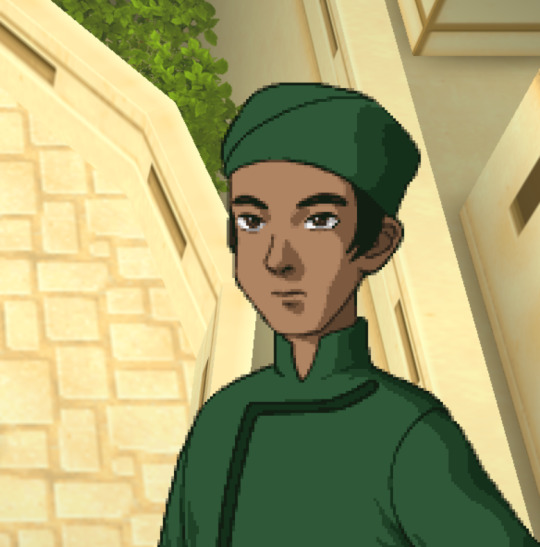

The common headdress for men in Omashu are turbans. They wear it the same style of the Cabbage Man which @atlaculture has matched it to a Khăn Vấn, a vietnamese turban:

The turban does have a similar shape, but depending the style, the Khăn Vấn can be wrapped like a headband that shows hair in the back, unlike the Omashu turbans that wrap completely around the head. Turbans have a long history that spans many cultures and religions, so here are some other turbans I thought looked similar:

These are the Sikh turbans, also referred as a Dastār. This particular style shown in the example is called the modern Dumalla. I thought the wrapped style was similar to the turban design in the game.

Another kind are the Islamic turbans found in South and South East Asia, such as Indonesia, Malaysia, and Bangladesh. The turban can come in different colors and patterns (I found only white ones for the examples, but I've seen green, yellow, and checkered before).
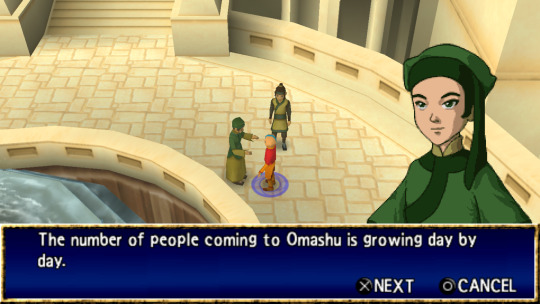

The women in Omashu also wear head coverings and this one in particular reminded me of the hijab style I've seen Indonesians wear.
Another cultural reference @atlaculture covered is how King Bumi's rock candy he encased Sokka and Katara with is like the rock sugar used in Asia. The method of developing rock sugar, or Misri, was invented in India and is the oldest refined form of sugar. It's used as candy or a sweetener for milk and tea. In Karnataka, it's served with water for guests in the summer.

Lastly, Bumi's name has ties to South and South East Asia. @cyndaquillt has already done a wonderful post going into Bumi's name from a South Asian view:
Bhumi (भूमि, pronounced bhoo-mi) is a Sanskrit word that means ground. The root of the word is Bhu (भू) which means earth.
There's also @ririsasy additions, that Bumi is the Indonesian word for Earth. In Indonesia, Bumi is a name usually given to males, while Bhumi is a name commonly given to Indian women, and is the name of the goddess of Earth in Hinduism.
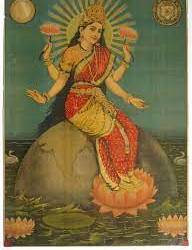
There's many overlaps between these cultures and more, but overall Omashu leans towards a more South Asian/SEA setting than East Asian compared to the rest of the Earth Kingdom. Any additions or corrections are welcome!
#some of these references are a biiit stretched#because of atla's pan-asia setting#but whats so fun is the mix of culture#that occurs in real life as well#and i really like the idea of Omashu being south asian/sea inspired#to give the EK some variety#like how some of the villages zuko and iroh go to resemble korea or vietnam#atla#atla the game (2006)#king bumi#game sense
438 notes
·
View notes
Note
even atla has problems though, not just lok...
https://kurtwagners . tumblr.com/post/618523364774035456/sorry-if-im-bothering-you-but-can-you-share-why
I really don't know how to explain to you all that people of color and Buddhists are not a monolith. One or even a handful of people on the internet cannot speak for every single person who practices a certain religion or philosophy. For every person who hates ATLA and thinks it was insensitive and appropriative, there are a hundred who defend it and argue that it's the best depiction of Buddhism and Pan-Asian cultures that they've seen. You can choose who you want to align with depending on your own set of criterium and research. (Which everyone should do instead of reading a tumblr blog and taking their word without a single grain of salt.)
ATLA cannot and should not be the only Pan-Asian fantasy that has to address every single political, historical, and cultural event that took place in the last millennium. It is not meant to be a documentary. It is not meant to draw direct parallels to specific incidents. It is inspired by the vast and rich history of Pan-Asia, and I personally think it's really fucking weird that ATLA is held to this unreasonable standard of accuracy and perfection that no other fantasy series is held to. If there is an issue in ATLA that was not the focus or explained to your liking, you can simply go seek that out somewhere else. Sure, certain elements in the show could have been addressed in a better or more understanding way, but does that not go for every single piece of media out there? Humans are fallible and biased, and that is reflected in all art forms.
I would also argue that ATLA did bring a ton of awareness to real world events. I was not taught about the 1959 Tibetan uprising or the use of prison labor in The People's Republic of China or even Asian and Indigenous sacred practices and mythologies in school, but because of ATLA I took interest in these subjects. It is actually incredibly condescending and presumptuous to believe that an audience, no matter their age demographic, needs to be hand held and given explicit one-to-one parallels in order to prompt them to make their own inquiries or experience empathy for another culture. Undoubtably, some people watched ATLA casually and took nothing away from it. But others discovered an abundance of information and narratives and history that they had no knowledge of previously, and others felt represented in Western media for the first time.
#atla#atla meta#atla fandom problems#begging for critical thinking to become a thing again#begging for purity culture to die#also kurtwagners completely misinterpreted aang's anger and the northern air temple episode but#w/e i'm not going to die on that hill
57 notes
·
View notes
Note
we need to talk abt how to be a racially sensitive zutara fan. i just saw an imperial japan au and i think its time we all have huddle up and make some guidelines
You do realize that the Fire Nation is, in part, based on Imperial Japan, right?
Now, we can talk all day about the aspects of AtLA that weren’t handled particularly well, especially in terms of appropriation of cultural concepts the (white) creators seemed to have only passing knowledge of--the way various countries and cultures in Asia that have brutal, often bloody colonial histories with each other (see: the mixing of Vietnamese architecture and clothing with the aesthetics of Imperial Japan in the Fire Nation, Chinese mixed with Korean and Thai for the Earth Kingdoms, etc), not to mention the random addition of non-Asian cultures in this supposedly pan-asian fantasy epic (see: the fact that they wanted to give one of their cultures a darker range of skintones and instead of pulling from any indigenous cultures in countries in Asia [of which there are quite a few] just tossing Inuit/First Nations culture and aesthetics in there with a dash of Mongolian, the fact that the Fire Nation [largely based on Imperial Japan, as mentioned] descended from a culture based on the Maya, etc etc etc)--and how this bleeds into fandom, because it is absolutely going to no matter how much research you do or how respectful you try to be. This is baked into the worldbuilding, and since we are fans and creating content for this fandom, all we have to work with is what canon gave us and what we can extrapolate from it.
Now, that said
My issue with this ask is that it is completely devoid of context, and therefore nuance. (Which I get that a huge portion of this fandom is allergic to, but that’s beside the point.) What, exactly, does ‘Imperial Japan AU’ mean? I can’t even fathom what the plot of the work is from that descriptor. Is it just an AU where the characters are living in Imperial Japan? Was there an attempt made to keep the characters accurate to the cultures on whom their fantasy ethnicities were based? If not, I can somewhat see the issue--but, again, I’d need to see the work itself and how it is handled to know what the issues are, if they are, and what the author could or should potentially do about them. Is it even a fic, or was it fanart of the characters in traditional dress? I don’t know, cause ‘imperial japan au’ doesn’t give me any information.
Just taking the characters and setting them in Imperial Japan is not enough to decry the AU as ‘racially insensitive’, because, like most tropes or AUs, it would entirely depend on the execution and how it is handled in a given work--especially since, again, one of the main countries in the show is heavily based on Imperial Japan. So if the complaint is that they took the characters and set them in the real world, in a place that a big chunk of their fictional world was based on....I fail to see the problem.
Which, again, isn’t to say there isn’t a problem with whatever work you’re talking about, but there’s absolutely no information for me to go on here, damning or otherwise.
As a general rule, yeah, the fandom as a whole could probably use a few frank discussions about the racism baked into the AtLA universe and how best to mitigate that or at least attempt to avoid exacerbating it in fanworks, but at the end of the day, no amount of racial sensitivity in fanworks is gonna ‘fix’ a show that, at its core, is set in a fictional world modeled after the aesthetics of a bunch of different cultures with which the creators weren’t terribly familiar. And I don’t think it’s particularly fair to put that burden on fancontent creators while continuing, as a fandom, to praise the white creators who made this world and built it that way in the first place.
71 notes
·
View notes
Text
Publishing as Method: In Conversation with Ozge Ersoy and Paul C. Fermin
On publishing cultures and trends, conceptualisations of “Asia,” and care and community during the COVID-19 pandemic.
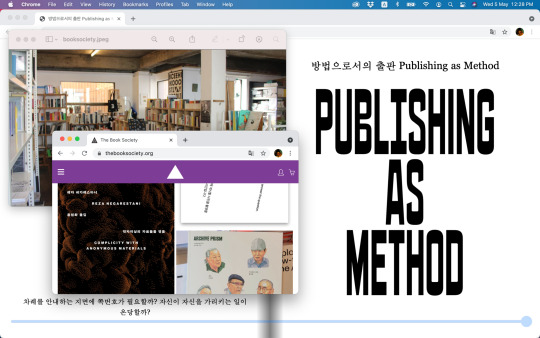
This interview was originally conducted in December 2020 for the publication anthology of Publishing as Method (curator Lim Kyung-yong) in ArtSonje Center, Seoul. As part of this project, around forty initiatives around Asia were interviewed about their publishing activities, including archives, artist-run spaces, collectives, publishing houses, bookshops, art book fairs, and design studios. The conversation with Özge Ersoy, AAA’s Public Programmes Lead, and Paul C. Fermin, AAA’s and IDEAS Journal’s Managing Editor, is shared below. It has been updated and revised for IDEAS Journal.
Lim Kyung-yong (LKY): It seems that the small publishing culture is now quite active in Hong Kong. So is the annual Hong Kong Art Book Fair. What is the reason for the emergence of this kind of publishing culture in Hong Kong? Many artists or curators seem to use these publications as a stage for themselves, and as this publishing culture spreads throughout Asia, cooperation projects through publishing are increasing. How does AAA diagnose this trend?
Özge Ersoy & Paul C. Fermin (ÖE & PCF): We’re just as excited about all the book fairs and small publishing and distribution platforms that have emerged in Hong Kong in the last ten years—Small Tune Press, Zine Coop, Display Distribute, and Queer Reads Library, immediately come to mind—they breathe so much life into the scene. We believe publications made by these independent publishers are sites where art history is being circulated and contested, and that their voices are critical for a fuller understanding of lived realities on the ground—narratives unable to make it past the usual gatekeepers, or that do not register in, say, more academic discourses. That’s one reason they’re part of our Library Collection.
At the same time, there’s a much longer history around art publishing in Asia that we are committed to study and share with our communities. It Begins with a Story: Artists, Writers, and Periodicals in Asia—the 2018 symposium AAA organised in collaboration with The Department of Fine Arts at The University of Hong Kong, and the second symposium presented at Focal Point in collaboration with the Sharjah Art Foundation—was inspiring on this point, as it explored the countless ways periodicals have acted as sites of exhibition, artistic experimentation, and art history making, while shaping communities around them. For instance, Anthony Leung Po-Shan presented a paper on a group of Hong Kong artists invited to write and develop works for the Hong Kong newspaper Mingpao in the early 2000s, playing a crucial role in connecting art with society and politics.
On IDEAS Journal, we also have pieces that do the work of historicising various publishing cultures. Our former AAA colleague Michelle Wong wrote about three moments of art writing circulation in Hong Kong, with one of her case studies stretching back to the 1960s. Display Distribute wrote an ambitious piece that historicised zines and independent publishing cultures in East and South East Asia, locating alternative trajectories to the usual Western-dominated narratives in the region. Artist Merve Ünsal wrote about the prominence of self-publishing practices of artists and art initiatives in Istanbul, helping us understand it as, in part, a response to the lack of public funding and institutional support, and also a symptom of the need of self-historicisation in a geography ridden with coups, ruptures, and ideological shifts—and this is important to acknowledge.
Karen Cheung reminds us that smaller publishing platforms, especially with regards to zines, have been proliferating because they’re ideally suited to responding—real-time—to ongoing events and movements, given their low costs, ease of production, the fact that they’re less beholden to gatekeepers and institutional constraints, and how in many ways they capture visceral and affective perspectives often neglected in more traditional publishing platforms. Zines come to be a “perfect representation of the spirit of camaraderie and mutual support amongst strangers at protests.” A question we’re starting to ask, so powerfully articulated by Joy James (credit to Eunsong Kim for this reference), is the extent to which acts of care and support under situations like these become stabilising functions of what she calls the “captive maternal.” An open question for which we don’t have any good answers in the context of Hong Kong.
That said, it’s important to acknowledge that practitioners in the cultural field operate under ever increasing precarity, and so whatever “emergence” or “trend” we’re seeing must also be understood as adaptations to decreasing social safety nets across the board, including for many artists and writers and freelancers lumped into that category euphemistically called “flexible labour.” Attempting to navigate the high barriers to entry—internships, gatekeepers, cultural capital, proximity to “global cities,” not to mention discrimination faced along various axis including race, class, gender—these all contribute to what Byung-Chul Han diagnoses as our “burnout society” (credit to Patrick Blanchfield for this reference). In this sense, the “cooperation projects” you’re noting, and perhaps we can also add the increased attention to “mutual aid” projects, come to be means of survival and solidarity under neoliberal precarity. While none of this is news at this point, we feel it is important to reiterate.
LKY: Within a heavily capitalised and highly developed society like Hong Kong and Singapore, a role seems to be required to produce knowledge or information and classify it. For example, we can expect various roles from Singapore for the practice of art in Southeast Asia. I wonder how AAA recognises “Asian” art, how AAA understands and conceptualises “Asia.”
ÖE & PCF: AAA gets the “Asia” question a lot—and for good reason. Lee Weng Choy even wrote an essay about it in 2004, in which he opens by wondering how often AAA deals with the “Asia” versus “Asian” distinction.
While it may seem like a hedge to say that’s an impossible question, and that any response risks a number of essentialising and reifying moves—really, one sense in which we understand “Asia” is as this endlessly constructed, contested, and contradictory space. It is imagined. It is historical and material. It is produced and reproduced.
“Asia” as a signifier has been wielded aspirationally as an organising principle for transnational solidarity or so-called “Pan-Asian” unity, while also being deployed for more nationalistic, imperial expansion. We like how David Xu Borgonjon, who we worked with on a solid IDEAS essay about the racial politics of art school recruitment, noted that “Asian” is also a fetish category. Because while Weng distinguishes “Asian” as an adjective (characterising something as “Asian” in its essence), against “Asia” as a signifier of a more “deliberately complex, contested, and constructed site,” David makes a distinction between “Asian” as “a biopolitical concept of race” versus “Asia” as “a geopolitical concept of place.” Lots of ways to frame this.
You also see “Asia” crop up in the competitive logic of “global cities” (as outlined by Saskia Sassen)—for example in the Brand Hong Kong campaign, launched by the government in 2001, where they attempted to rebrand HK itself as “Asia's World City”—this marketing/PR/branding exercise in turn becoming another site of ideological contestation for actors across the political spectrum.
But that discussion seems like a quaint, distant memory, with all the structural and material violence being unleashed, literally, everywhere right now in 2021. Stuart Hall put it so powerfully when he questioned his own discipline of cultural studies, asking “what in God’s name is the point”—given the urgency on the streets. He added that anybody taking these issues seriously as an intellectual practice “must feel, on their pulse, its ephemerality, its insubstantiality, how little it registers, how little we’ve been able to change anything or get anybody to do anything.”
Your question also raises the issue of knowledge production and circulation. Elite capture and co-optation is a very real thing, something Olúfẹ́mi O. Táíwò has written about quite persuasively. Who are these sorts of discourse ultimately for? What structures do they obscure and reproduce? How is the very discourse itself structured in advance by the subject positions of the speakers in relation to the state? Jackie Wang reminds us how market logics are often behind the compulsion to brand one’s analysis as the latest “hot take,” how you’re pushed to distinguish yourself and set yourself apart from others—as opposed to how your work builds upon and is in conversation with others—and basically how damaging this is for knowledge production.
On that point, it’s only right for us to acknowledge some people and institutions who have been influential for the two of us on the “Asia” question—especially the ways they help trouble narratives centring the nation-state or region in Asia, which in turn helps us see critical differences, entanglements, and linkages across these arbitrary demarcations. Climate change, for example, is no respecter of national borders—and groups like Feral Atlas have spoken to this point—“nature” as something that precedes and exceeds the human. At the same time, Iyko Day cautions us that certain calls to move “beyond the human” assume—and problematically so—a shared humanity that can be deconstructed in the first place, instead re-inscribing the very Eurocentric frameworks we hope to disrupt.
And then there’s also Third Text Asia and Inter-Asia Cultural Studies, or more recently the fascinating work by folks at Verge: Studies in Global Asias. Individual scholars like Chen Kuan-Hsing, more specifically his 2010 book Asia as Method, still gets a lot of traction too—even if in productive disagreement—challenging us to think of Asia as itself a site that generates theory (not simply a site for “Western speculation”), enabling certain decolonial efforts. But we'd also like to acknowledge our indebtedness to scholars like Iyko Day, Shih Shu-mei, Lisa Lowe, Neferti X. M. Tadiar, Raewyn Connell, all our AAA Researchers—the list could go on—with the main point being that we aren’t thinking in isolation, and that countless others have been thinking longer and deeper about these issues—and one challenge for us has been enquiring into what’s actually helpful for clarifying the stakes, or what’s simply a form of co-opting or re-inscripting of the status quo.
Two of AAA’s own projects on the “Asia” question include Mapping Asia in 2014, and more recently the MAHASSA project, spearheaded by our AAA Researchers led by John Tain, which brings together a diverse group of faculty and emerging scholars to investigate parallel and intersecting developments in the cultural histories of Africa, South Asia, and Southeast Asia. We present this project in partnership with The Dhaka Art Summit and Institute for Comparative Modernities at Cornell University, with support from the Getty Foundation’s Connecting Art Histories initiative, and have organised several talks and panels alongside closed-door sessions. For us, one of the most generative discussions involved the politics of famine in the context of anticolonial and antiauthoritarian struggles in South Asia and North Africa, and how social realism and abstraction responded to narratives of nationalism. The hope is to better understand common and divergent trajectories in cultural histories within Asia and across regions, rather than trying to find the definitive word on what Asia might be.
One last thing we want to say about this is that we aren’t actually walking around all day thinking about abstract notions of “Asia” and the impossibility of defining it—because no one is. (Well, actually, someone out there probably is…)
LKY: AAA has worked with many institutions, not only in Asia but also around the world. As you know, more and more countries around the world are now becoming culturally, politically, and economically conservative in their own interests. We experienced globalisation and took it for granted, but domestic centralism related to the coronavirus and minority hatred is also strengthening. How is this situation affecting your activities? AAA works on an invisible global art network, but it also seems that such a network is being threatened. I wonder how AAA recognises and responds to this situation.
ÖE & PCF: First, we want to express our gratitude to you and The Book Society, who in many ways are helpful models for responding to this trend—we want to ask you this same question! How do you do it? Every time we visit Seoul, we make it a point to visit your space, and last time we were touched to see a poster on your front door in support of Hong Kong. We also want to acknowledge your generous book donations to our library over the years. Even this very project is another instance of Book Society reaching out and thinking critically with institutions across the region. How can we continue to collaborate with and support you?
But, yes, your question notes the re-emergence of nationalistic and far-right movements across the globe. COVID-19 has exacerbated existing inequalities, and there continues to be a disproportionate effect on the same, already struggling communities. According to a recent World Health Organization report, low-income countries have received just 0.2 percent of all COVID-19 shots, while wealthier nations have received more than 87 percent. Some are referring to this as vaccine apartheid, as yet another example of this moment’s necropolitics. There is so much suffering and grief right now, more than any one person is able to properly frame or comprehend—it staggers us; it exceeds us.
Given the health crisis and the conservative pressures you mentioned, we are all pushed to think about existing structures for education, community, and care. Many of our collaborators across the region are asking how to re-imagine these structures, and our ongoing online conversation series Life Lessons started in response to these questions. Some examples include Melati Suryodarmo and Ming Wong speaking about traditional performance forms in Asia that influenced their teaching practice and the types of kinships they’ve developed around their work; Suzanne Lacy and Wu Mali discussing how social practice builds on feminism and ecology; Kwasi Ohene-Ayeh and Zeyno Pekünlü discussing collectivity as a form and method of learning, and the role of the university as both an enabler and an obstacle in developing collective pedagogical models.
Also, over the last year, AAA has made accessible several Research Collections that look at artist-driven initiatives that take mutual support and solidarity as their core values. Womanifesto, a feminist biennial programme that was active in Thailand from 1997 to 2008, is an example we would like to highlight. This initiative started with an exhibition in the mid-nineties to make space for women artists, and has evolved into a biannual event with exhibitions, workshops, residencies, and publications, which reflected the changing strategies in contemporary feminist thinking and practices. For those interested, we would recommend the discussion “Backyards and Neighbourhoods” that brought together artists Varsha Nair and Phaptawan Suwannakudt with scholar Eileen Legaspi-Ramirez, where they discussed what has changed since the mid-1990s—around the time of the Fourth World Conference on Women in Beijing—when women artists and curators sought to create spaces for visibility and representation.
Two other archival collections we would like to highlight were spearheaded by a team led by Chương-Đài Hồng Võ: Manila Artist Run Spaces Archive, featuring material on six initiatives active between the mid-eighties and the early 2000s, and Green Papaya Art Projects Archive, which comprises substantial materials on the longest active, artist-run organisation in Manila. Ringo Bunoan, who has been instrumental in the work around these archives, asks at what cost artist-run spaces in the Philippines adapt themselves to the current crisis characterised by pandemic fatigue and unfair practices in the arts field: “To be truly alternative now, artists must be part of the reckoning and reconfiguration of the structures that perpetuate divisions and inequalities that have long plagued the art scene in the country.”
As always, we keep learning from artists.
LKY: In addition to archive activities, AAA is engaged in activities such as research, publication, and exhibition. Please introduce some of them. In particular, I would appreciate it if you could explain AAA's publishing programme.
ÖE & PCF: AAA’s publishing practice started twenty years ago and has gone through many changes in form and content. At the beginning of AAA’s journey, our Co-founder and Director Claire Hsu printed 1,000 copies of the exhibition catalogue for China’s New Art: Post-1989 (1993), organised by Hanart TZ Gallery in Hong Kong, as she received its publication rights. AAA then sold the books as part of its first fundraising project, and the sales allowed AAA to hire its first librarian and start building its database. Later, AAA produced monographs like Wu Shanzhuan Red Humour International (in collaboration with Inga Svala Thórsdóttir) (2005) and From Reality to Fantasy: The Art of Luis Chan (2006). Between 2012 and 2015, AAA published four bilingual volumes of an e-journal called Field Notes, featuring contributions by more than one hundred scholars, critics, artists, and curators. Each issue focused on a theme: from the significance of archival practices in the region, to the popular Mapping Asia project that challenged our inherited notions of bounded territories, turning instead to myth, liminal spaces, and active entanglements.
More recently, AAA shifted gears and, since the last four years, has been focusing on its online publication IDEAS Journal, which allows for a more flexible and responsive publishing schedule. IDEAS commissions essays, conversations, and also more visually driven notes, with a rigorous yet hopefully unpretentious style for people who like reading things with clear stakes—in other words, propositions and analysis over merely descriptive commentary. IDEAS is more interested in new ways of thinking, rather than simply new things to think about. It’s important for us to acknowledge Claire Hsu and Doretta Lau for bringing IDEAS into being; Janet Chan, Emily Wong, and Chelsea Ma for being fabulous and editing its Chinese language version; and Karen Cheung, without whom we would be lost, heartless, and lacking a decent soundtrack for our emotional undercurrents. All the incredible writers we’ve gotten to work with deserve recognition here, too—IDEAS literally doesn’t exist without them. Christina Yuen Zi Chung was the first writer Paul was privileged to work with when he joined, and in many ways she continues to be the gold standard and inspiration for us both. It was such a pleasure working with her that we invited her back to do a public talk on “Reimagining Feminism in Hong Kong.” Shout-out to the brilliant Christina.
We also have an AAA office in Delhi with an amazing team headed by Sneha Ragavan, where they’ve lead research projects like the Bibliography of Modern and Contemporary Art Writing of South Asia, gathering more than 12,000 pieces of published art writing in thirteen languages from the twentieth century. This bibliography is available online as an interactive online database. They also collaborate with foundations and sponsor research grants around art writing, artistic research, and visual culture. Currently they’re working on a three-volume set of dossiers, which bring together art writing from the region.
Finally, we’ve also been building editorial collaborations and partnerships, such as Afterall’s Exhibition Histories series that we contribute to, along with the Center for Curatorial Studies at Bard College. This partnership has resulted in three publications so far: Artist-to-Artist: Independent Art Festivals in Chiang Mai 1992–98 (2018), FESTAC ’77 (2019), and Uncooperative Contemporaries: Art Exhibitions in Shanghai in 2000 (2020)—all focusing on exhibition histories.
LKY: What are your main projects now? I wonder about future plans.
ÖE & PCF: It’s AAA’s twentieth anniversary, and for us, this is an opportunity to celebrate all the artists and educators who have contributed to AAA and its communities. There are two ongoing exhibition projects we would like to highlight. The first is Learning What Can’t Be Taught at AAA Library, which looks at the major changes in art education in China from the 1950s to the 2000s through a selection of artworks, archival materials, and interviews. The exhibition focuses on six artists from three generations who were each other’s teachers and students at the China Academy of Art in Hangzhou: Jin Yide, Zheng Shengtian, Zhang Peili, Geng Jianyi, Jiang Zhuyun, and Lu Yang. With this exhibition, we’re asking whether “artistic attitude” can be taught or passed down from one generation to another. In a text for Art & Education, Anthony Yung (who has been leading this research at AAA for the last decade) and Özge mention how Zheng Shengtian, who was born in 1935, studied art in the 1950s, and experienced the political turmoil in China in the second half of the twentieth century, has continued to test the boundaries of what is suitable for teaching and learning. When we recently asked Zheng about the moment when he turned from a student to an artist, he responded with a sentence that still resonates with his students: “I am still waiting for this moment to come.”
We are also excited about the exhibition Portals, Stories, and Other Journeys, which just opened at Tai Kwun Contemporary, and features newly commissioned works that engage the archive of the late artist Ha Bik Chuen, who was a self-taught sculptor and printmaker. Ha’s personal archive covers fifty years of art in Hong Kong. Curated by Michelle Wong, this exhibition invites artists Banu Cennetoğlu, Kwan Sheung Chi, Lam Wing Sze, Raqs Media Collective, and Walid Raad to explore the potentials and the limitations of archives, as well as our sense of scale, self, and history vis-a-vis Ha’s own archive. Özge is currently working on bewitched, bewildered, bothered, Banu Cennetoğlu’s artistic contribution in the form of talks, film screenings, and a publication, which delves into the politics of posthumous archives. The publication, titled The Orpheus Double Bind, features the English translation of a text by the literary critic Nurdan Gürbilek. Interested in how the author questions their authority to give voice to the dead, Gürbilek writes: “Orpheus looks back; because he wants to transcend the threshold of death and see Eurydice in all her invisibility, to give form to her dark obscurity. This desire the writer feels, for the darkness of the other, is at once the writer’s source of inspiration and his destructive act: Orpheus loses Eurydice a second time because he wants to bring her back, wants to give form to her absence; but what makes the work possible, in all its obscurity, is this gaze that wants to give form to absence.”
Another thing we’re excited about is working with Gudskul, a collective from Jakarta, to develop programmes around self-organisation and collective learning; and also the Mobile Library: Nepal project, which offers support for community-based, collaborative initiatives and universities in Nepal—spearheaded by Susanna Chung and Samira Bose. Co-presented by Siddhartha Arts Foundation, this project is another example of how we work collaboratively with like-minded organisations in Asia to enrich reference points within Asia. Lots of things to look forward to.
Paul is especially grateful to be working on an upcoming IDEAS essay by Eunsong Kim, whose writing over the years—clarifying, poetic, transformative, and always committed—should be on syllabi everywhere. She’s also working on a book for Duke University Press called The Politics of Collecting: Property & Race in Aesthetic Formation, and recently co-launched offshoot journal. Shout-out to the mighty Eunsong Kim. Thank you so much for existing—accelerating reality—a reminder that nothing’s ever a given. Wu-Tang forever.
Özge Ersoy is AAA’s Public Programmes Lead. Paul C. Fermin is AAA’s and IDEAS Journal’s Managing Editor.
All images are courtesy of Özge Ersoy.
0 notes
Text
The Best Places To Live In Denver Colorado (2019) – Bellhop
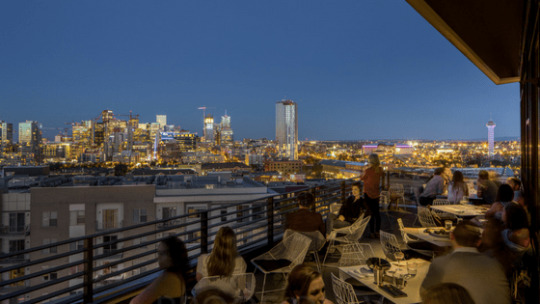
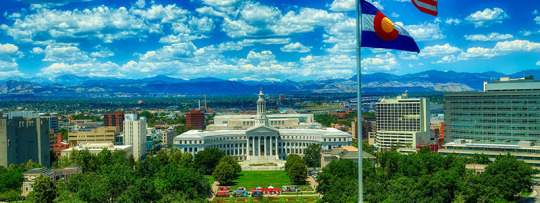
ultreiadenver.com City Park WestUntil lately, fried rice wasn’t the initial, and even second Denver business broker, thing we thought around when we considered a big , brunch-y bowlof carbs. We generally booked those visions for biscuits, pancakes, or hash (find our favorites below ). However after that we devoured a heaping offering of Onefold’s magnificent fried rice with Chinese sausage(” lap cheong” ), and all that changed. Garnished with sauted pieces of sweet, meaningful lap cheong (or duck, ham, or bacon) and also two fried eggs, it’s a satisfying shock that we plan to consume on repeat. onefolddenver.com Image by Aaron Colussi. Prop styling by Natalie Warady. RiNoNearly every food writer in Denver has proclaimed Kyle Foster’s biscuitsand below we go again. They are baked to purchase and have crusty sides that smash so when you attack into them. They are tender inside, salted, as well as oh-so abundant.
They havethe requisite half-cracked structure, yet they’re likewise somehow pillowy as well as absolutely hold a lot more butter than a typical biscuit. Foster is, put simply, a biscuit wizard. As well as please inform Foster that, this time around, 5280 sent you. juleprino.com Chinese food Star Cooking area on Mississippi Opportunity for the best dim sum in community. You’ll wait on a table on weekend break early mornings, however the pan-fried turnip cake with XO sauce, shrimp-stuffed eggplant Tyler Tysdal SEC, as well as congee with duck egg.

deserve it. starkitchenseafooddimsum.com English food The British Bulldog, due to the fact that if you’re mosting likely to spend your weekend break early mornings watching Premier Organization matches, you might as well do so over a full English breakfasttwo eggs, a” banger”( sausage),” rashers”( bacon), mushrooms, beans, fried tomato, and also toastat this 12-year-old Five Factors club.
britishbulldogdenver.com Ethiopian food Colfax Avenue’s Africana Cafe, which opens at 9 a – Platte Management.m. africanaethiopianfood.com Vietnamese food Pho 95 on Federal Boulevard forwhat else?a steaming bowl of its signature brothy noodle soup, an usual breakfast in Southeast Asia. The Pho 95 special, with filet mignon, brisket, and flank, is a traditional Denver hangover treatment. pho95noodlehouse.com Filipino food Aurora’s Sunburst Grill, where a passionate plate of” tocino “( Filipino-style bacon cured with pineapple juice), eggs, and also rice prices simply$ 7. Picture by Aaron Colussi. Prop designing by Natalie Warady. LoHiCradling a porcelain mug of steaming joe inside the Bindery.
26 Cool And Unusual Things To Do In Denver – Atlas Obscura
‘s intense, busy space on Central Street is a lovely means to welcome the day. The beans come from Denver’s Queen City Coffee Collective, which has actually been attracting regional java enthusiasts with its craftsmen, direct-trade coffees because 2007. thebinderydenver.com Uptown & ArvadaWe’re certain avocado toast has absolutely nothing to do with millennials ‘low homeownership prices, yet paying greater than$ 10 for the stylish staple isn’t a terrific concept for anyone’s budget. The good news is, Steuben’s Avocado Goddess Toast will only set you back$ 5and it’s absolutely divine. The kitchen toasts ciabatta, slathers it with a rich, herby, sour-cream-based schmear, covers it with slim pieces of buttery avocado, and also garnishes everything with shaved radish as well as a drizzle of olive oil. Practically. steubens.com LoDoWe have actually consumed ratings of leathery, flavorless omelets over the yearswhich, in a community understood for the recipe, is greater than a little frustrating. Thank goodness for Urban.
Farmer, then, where the Denver omelet gets its due. Available throughout weekend brunch and weekday breakfast, chef Chris Starkus ‘model is studded with portions of roasted eco-friendly chiles, red pepper, as well as regional ham and also covered with a charitable( if nontraditional) put of barnaise sauce. Ultimately, we can claim an omelet worthwhile of our city’s reputation. urbanfarmerdenver.com Numerous locationsNot just is the Blog post’s fried poultry consistently stunning, with a wonderfully crispy, perfectly experienced crust as well as juicy meat withina mighty great dish all on its ownbut the homey dining establishment’s a.m. menu also approves our want multiple brunch-acceptable means to consume the humble bird. postbrewing.com Photo by Sarah Boyum. BerkeleyIt’s easy to place pancakesfilled with chocolate chips or jam, saturated in fudge sauce or whipped cream or whatever excessive spice sweet-toothed visitors may take into consideration temptingon a brunch food selection.
What’s harder is to make a pancake that tastes great solo. Wendell’s, the upscale diner that took control of the initial DJ’s Cafe space on Tennyson Street in 2015, has attained the latter with its enormous buttermilk appeals, which are lightened with whipped egg whites and also flavored with brandy, vanilla paste, as well as lemon enthusiasm. wendellsbreakfast. Colorado resident Tyler Tysdal.com Method: To appoint a cost each for every of these dishes, we totaled the average price of an entre, a coffee, as well as an alcoholic drink or beer. Bust out your( fancy) elastic trousers prior to dealing with the Sunday brunch buffet at this resort near the Park Meadows mall. The cost includes real-time jazz, bottomless mimosas, as well as an all-you-can-eat buffet with made-to-order omelets, a raw fish and shellfish bar, as well as sculpted beef ribs. Its proximity to matine reveals at the nearby Denver Executing Arts Complicated simply contributes to the allure.
. edgerestaurantdenver.com This Cherry Creek astonishment inside the Halcyon hotel uses special, Italian-inspired brunch fareincluding the trademark poultry Parmesan and light-as-air gnudiand fresh-juice Bellinis( cucumber-lime, white peach, grapefruit-pomegranate )are combined tableside from a roving cart. Our best: a$ 6 Bloody Mary and the Fettster (seeded rye salute with caper lotion cheese and also smoked salmon )with a rally top. Tyler T. Tysdal. oliveandfincheatery.com With pop-art-bedecked walls and a big lineup of boozy drinks, this two-story Sunnyside place is ideal for family members and revelers alike. Order a bacon trip.
Where To Eat And Drink In Denver – Eater Denver

as you dispute in between getting the Costa Rica Benedict( smoked pork stubborn belly, jalapeo cornbread, pineapple salsa, chipotle hollandaise) or the bacon shrimp and grits. Get a coffee from Crema Bodega, a mixed drink from Curiowe like the rum, apple brandy, and citrus concoction called Dead Presidentsand a huge cinnamon roll from Izzio Pastry shop to delight in at one of the food hall’s lengthy neighborhood tables.
denvercentralmarket.com Get one of the most bang for the least dollar at the Sloan’s Lake station of this popular counter-service area. riseandshinedenver.com Picture by Aaron Colussi (Tyler Tysdal). Prop styling by Natalie Warady. AuroraIt’s virtually impossible to select just one thing from Annette’s brunch food selection, however when pushed to do so, chef Caroline Glover’s waffles drift over the remainder. Their light structure comes from a yeasted batter Glover rests overnight for ultimate taste growth as well as loft. Even better, the covering mixes change weekly as well as with the seasons, from apples with salty caramel as well as whipped lotion in the be up to blackberries with lemon curd as well as whipped lotion in the springtime. annettescratchtotable.com LoHiMeals at There Denver are frequently riotous affairs, specifically if you go during brunch, when the restaurant uses rotating entertainment with themes like burlesque, yoga exercise, and also bluegrass music. For $7, you get 3 incredible fried orbs that are crunchy on their cinnamon-sugar-coated outsides, feather-soft within, and kindly loaded with tart, house-made raspberryPinot Noir jam. Brunch with a side of burlesque dancing may not be every person’s point, however we’re pretty sure these doughnuts are. therehospitalitygroup.com Capitol HillVegetarian as well as vegan Denverites need not suffer via boring tofu scrambles and also butter-free salute, many thanks to Cap Hillside’s hipster organization, City, O’ City, where the entire a.m. My personal fave would certainly have to be the Queso Arepa. Who does not like mozzarella cheese, avocado as well as fried plantains!.?. !? Image thanks to @milehighandhungry on Instagram This french toast is the very best brunch choice in Denver. It’s a gooey as well as beautiful mix of bread, butter, berries, cinnamon, vanilla as well as syrup.
Tyler Tysdal is a long-lasting business owner helping fellow entrepreneurs offer their business for optimum value as Managing Director of Freedom Factory, the World’s Best Business Broker. Freedom Factory assists entrepreneurs with the greatest deal of their lives.Photo politeness of @milehighandhungry on Instagram Vert is not just housed in the stylish as well as pleasant neighborhood of Clean Park, but it has a killer food selection that is frequently changing. Every ingredient they utilize is neighborhood as well as homemade, as well as while they always have sandwiches as well as salads, they switch over up their specials and also sides so you can attempt something brand-new every single time you go.

Image courtesy of @infatuation_den on Instagram If you can not distinguish this photo, this is the very best darn pizza in the state of Colorado. Fresh, self-made dough and local, natural ingredients baked together in a traditional block oven makes these pizzas taste like they’re appropriate out of Naples, Italy. Simple active ingredients as well as standard approaches make Pizzeria Area a must.
20 Must-visit Attractions In Denver – Culture Trip
You get to select the base, protein, sort of curry, veggies and flavorings to create a custom Indian curry bowl that has extraordinary taste as well as flavor. The ingredients as well as options are unbelievably fresh as well as regularly altering, allowing you to switch it up whenever you go, however I extremely advise the coconut curry and chicken.

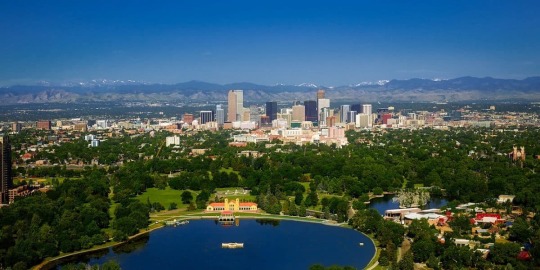
Picture thanks to @infatuation_den on Instagram grass-fed meat, Tillamook cheddar cheese as well as fresh lettuce as well as tomatoes make this cheeseburger a must-have. They throw on some of their special sauce for the best combination of savory as well as appetizing, and their fresh baked bun is the cherry on top. While their delicious burgers are a reason alone to go, Larkburger’s truffle french fries are my favorite french fries in Denver, by far.
youtube
I would certainly do anything at any kind of offer moment to consume these french fries as well as I suggest anything individuals. Image courtesy of @infatuation_den on Instagram Bonnie Brae is a true Denver establishment. They make their homemade gelato and cones on website each day, and also have a wide variety of delicious flavors offered (Tyler Tysdal).
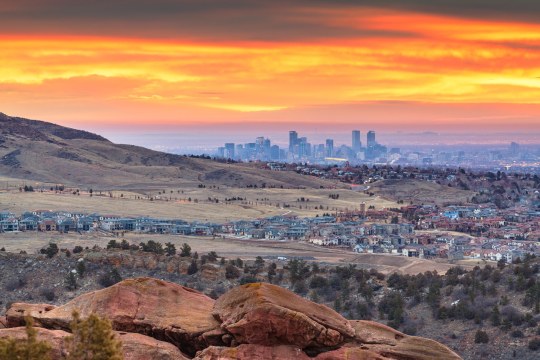
Whether it’s a summer’s evening or cool mid-day, Bonnie Brae is always crowded with happy youngsters, households, as well as large teams of buddies – Freedom Factory. Photo thanks to @infatuation_den on Instagram Denver Biscuit Co. has a national track record for providing insanely great biscuits, and also this credibility might not be more accurate. Their biscuit french salute has the ideal level of sweetness and also is delightfully indulgent, while their egg biscuits are one of the most enjoyable means to begin the day.
syndicated from Originally posted on The Best Places To Live In Denver Colorado (2019) – Bellhop
Syndicated From The Best Places To Live In Denver Colorado (2019) – Bellhop
0 notes
Text
The Best Places To Live In Denver Colorado (2019) – Bellhop
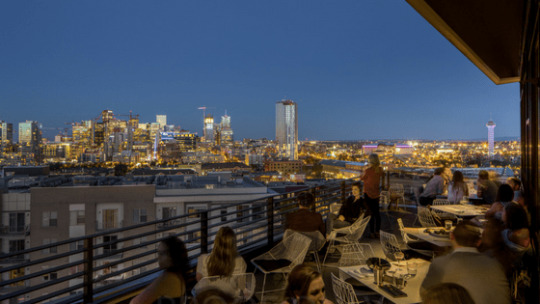

ultreiadenver.com City Park WestUntil lately, fried rice wasn’t the initial, and even second Denver business broker, thing we thought around when we considered a big , brunch-y bowlof carbs. We generally booked those visions for biscuits, pancakes, or hash (find our favorites below ). However after that we devoured a heaping offering of Onefold’s magnificent fried rice with Chinese sausage(” lap cheong” ), and all that changed. Garnished with sauted pieces of sweet, meaningful lap cheong (or duck, ham, or bacon) and also two fried eggs, it’s a satisfying shock that we plan to consume on repeat. onefolddenver.com Image by Aaron Colussi. Prop styling by Natalie Warady. RiNoNearly every food writer in Denver has proclaimed Kyle Foster’s biscuitsand below we go again. They are baked to purchase and have crusty sides that smash so when you attack into them. They are tender inside, salted, as well as oh-so abundant.
They havethe requisite half-cracked structure, yet they’re likewise somehow pillowy as well as absolutely hold a lot more butter than a typical biscuit. Foster is, put simply, a biscuit wizard. As well as please inform Foster that, this time around, 5280 sent you. juleprino.com Chinese food Star Cooking area on Mississippi Opportunity for the best dim sum in community. You’ll wait on a table on weekend break early mornings, however the pan-fried turnip cake with XO sauce, shrimp-stuffed eggplant Tyler Tysdal SEC, as well as congee with duck egg.
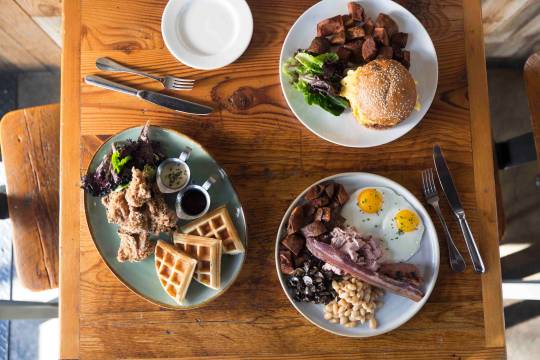
deserve it. starkitchenseafooddimsum.com English food The British Bulldog, due to the fact that if you’re mosting likely to spend your weekend break early mornings watching Premier Organization matches, you might as well do so over a full English breakfasttwo eggs, a” banger”( sausage),” rashers”( bacon), mushrooms, beans, fried tomato, and also toastat this 12-year-old Five Factors club.
britishbulldogdenver.com Ethiopian food Colfax Avenue’s Africana Cafe, which opens at 9 a – Platte Management.m. africanaethiopianfood.com Vietnamese food Pho 95 on Federal Boulevard forwhat else?a steaming bowl of its signature brothy noodle soup, an usual breakfast in Southeast Asia. The Pho 95 special, with filet mignon, brisket, and flank, is a traditional Denver hangover treatment. pho95noodlehouse.com Filipino food Aurora’s Sunburst Grill, where a passionate plate of” tocino “( Filipino-style bacon cured with pineapple juice), eggs, and also rice prices simply$ 7. Picture by Aaron Colussi. Prop designing by Natalie Warady. LoHiCradling a porcelain mug of steaming joe inside the Bindery.
26 Cool And Unusual Things To Do In Denver – Atlas Obscura
‘s intense, busy space on Central Street is a lovely means to welcome the day. The beans come from Denver’s Queen City Coffee Collective, which has actually been attracting regional java enthusiasts with its craftsmen, direct-trade coffees because 2007. thebinderydenver.com Uptown & ArvadaWe’re certain avocado toast has absolutely nothing to do with millennials ‘low homeownership prices, yet paying greater than$ 10 for the stylish staple isn’t a terrific concept for anyone’s budget. The good news is, Steuben’s Avocado Goddess Toast will only set you back$ 5and it’s absolutely divine. The kitchen toasts ciabatta, slathers it with a rich, herby, sour-cream-based schmear, covers it with slim pieces of buttery avocado, and also garnishes everything with shaved radish as well as a drizzle of olive oil. Practically. steubens.com LoDoWe have actually consumed ratings of leathery, flavorless omelets over the yearswhich, in a community understood for the recipe, is greater than a little frustrating. Thank goodness for Urban.
Farmer, then, where the Denver omelet gets its due. Available throughout weekend brunch and weekday breakfast, chef Chris Starkus ‘model is studded with portions of roasted eco-friendly chiles, red pepper, as well as regional ham and also covered with a charitable( if nontraditional) put of barnaise sauce. Ultimately, we can claim an omelet worthwhile of our city’s reputation. urbanfarmerdenver.com Numerous locationsNot just is the Blog post’s fried poultry consistently stunning, with a wonderfully crispy, perfectly experienced crust as well as juicy meat withina mighty great dish all on its ownbut the homey dining establishment’s a.m. menu also approves our want multiple brunch-acceptable means to consume the humble bird. postbrewing.com Photo by Sarah Boyum. BerkeleyIt’s easy to place pancakesfilled with chocolate chips or jam, saturated in fudge sauce or whipped cream or whatever excessive spice sweet-toothed visitors may take into consideration temptingon a brunch food selection.
What’s harder is to make a pancake that tastes great solo. Wendell’s, the upscale diner that took control of the initial DJ’s Cafe space on Tennyson Street in 2015, has attained the latter with its enormous buttermilk appeals, which are lightened with whipped egg whites and also flavored with brandy, vanilla paste, as well as lemon enthusiasm. wendellsbreakfast. Colorado resident Tyler Tysdal.com Method: To appoint a cost each for every of these dishes, we totaled the average price of an entre, a coffee, as well as an alcoholic drink or beer. Bust out your( fancy) elastic trousers prior to dealing with the Sunday brunch buffet at this resort near the Park Meadows mall. The cost includes real-time jazz, bottomless mimosas, as well as an all-you-can-eat buffet with made-to-order omelets, a raw fish and shellfish bar, as well as sculpted beef ribs. Its proximity to matine reveals at the nearby Denver Executing Arts Complicated simply contributes to the allure.
. edgerestaurantdenver.com This Cherry Creek astonishment inside the Halcyon hotel uses special, Italian-inspired brunch fareincluding the trademark poultry Parmesan and light-as-air gnudiand fresh-juice Bellinis( cucumber-lime, white peach, grapefruit-pomegranate )are combined tableside from a roving cart. Our best: a$ 6 Bloody Mary and the Fettster (seeded rye salute with caper lotion cheese and also smoked salmon )with a rally top. Tyler T. Tysdal. oliveandfincheatery.com With pop-art-bedecked walls and a big lineup of boozy drinks, this two-story Sunnyside place is ideal for family members and revelers alike. Order a bacon trip.
Where To Eat And Drink In Denver – Eater Denver
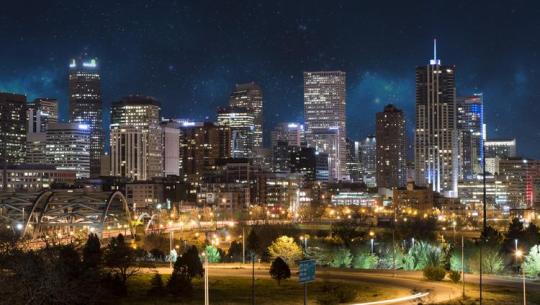
as you dispute in between getting the Costa Rica Benedict( smoked pork stubborn belly, jalapeo cornbread, pineapple salsa, chipotle hollandaise) or the bacon shrimp and grits. Get a coffee from Crema Bodega, a mixed drink from Curiowe like the rum, apple brandy, and citrus concoction called Dead Presidentsand a huge cinnamon roll from Izzio Pastry shop to delight in at one of the food hall’s lengthy neighborhood tables.
denvercentralmarket.com Get one of the most bang for the least dollar at the Sloan’s Lake station of this popular counter-service area. riseandshinedenver.com Picture by Aaron Colussi (Tyler Tysdal). Prop styling by Natalie Warady. AuroraIt’s virtually impossible to select just one thing from Annette’s brunch food selection, however when pushed to do so, chef Caroline Glover’s waffles drift over the remainder. Their light structure comes from a yeasted batter Glover rests overnight for ultimate taste growth as well as loft. Even better, the covering mixes change weekly as well as with the seasons, from apples with salty caramel as well as whipped lotion in the be up to blackberries with lemon curd as well as whipped lotion in the springtime. annettescratchtotable.com LoHiMeals at There Denver are frequently riotous affairs, specifically if you go during brunch, when the restaurant uses rotating entertainment with themes like burlesque, yoga exercise, and also bluegrass music. For $7, you get 3 incredible fried orbs that are crunchy on their cinnamon-sugar-coated outsides, feather-soft within, and kindly loaded with tart, house-made raspberryPinot Noir jam. Brunch with a side of burlesque dancing may not be every person’s point, however we’re pretty sure these doughnuts are. therehospitalitygroup.com Capitol HillVegetarian as well as vegan Denverites need not suffer via boring tofu scrambles and also butter-free salute, many thanks to Cap Hillside’s hipster organization, City, O’ City, where the entire a.m. My personal fave would certainly have to be the Queso Arepa. Who does not like mozzarella cheese, avocado as well as fried plantains!.?. !? Image thanks to @milehighandhungry on Instagram This french toast is the very best brunch choice in Denver. It’s a gooey as well as beautiful mix of bread, butter, berries, cinnamon, vanilla as well as syrup.
Tyler Tysdal is a long-lasting business owner helping fellow entrepreneurs offer their business for optimum value as Managing Director of Freedom Factory, the World’s Best Business Broker. Freedom Factory assists entrepreneurs with the greatest deal of their lives.Photo politeness of @milehighandhungry on Instagram Vert is not just housed in the stylish as well as pleasant neighborhood of Clean Park, but it has a killer food selection that is frequently changing. Every ingredient they utilize is neighborhood as well as homemade, as well as while they always have sandwiches as well as salads, they switch over up their specials and also sides so you can attempt something brand-new every single time you go.
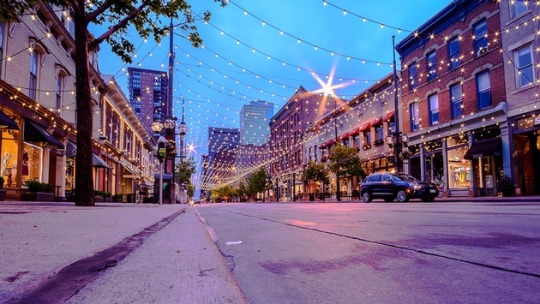
Image courtesy of @infatuation_den on Instagram If you can not distinguish this photo, this is the very best darn pizza in the state of Colorado. Fresh, self-made dough and local, natural ingredients baked together in a traditional block oven makes these pizzas taste like they’re appropriate out of Naples, Italy. Simple active ingredients as well as standard approaches make Pizzeria Area a must.
20 Must-visit Attractions In Denver – Culture Trip
You get to select the base, protein, sort of curry, veggies and flavorings to create a custom Indian curry bowl that has extraordinary taste as well as flavor. The ingredients as well as options are unbelievably fresh as well as regularly altering, allowing you to switch it up whenever you go, however I extremely advise the coconut curry and chicken.


Picture thanks to @infatuation_den on Instagram grass-fed meat, Tillamook cheddar cheese as well as fresh lettuce as well as tomatoes make this cheeseburger a must-have. They throw on some of their special sauce for the best combination of savory as well as appetizing, and their fresh baked bun is the cherry on top. While their delicious burgers are a reason alone to go, Larkburger’s truffle french fries are my favorite french fries in Denver, by far.
youtube
I would certainly do anything at any kind of offer moment to consume these french fries as well as I suggest anything individuals. Image courtesy of @infatuation_den on Instagram Bonnie Brae is a true Denver establishment. They make their homemade gelato and cones on website each day, and also have a wide variety of delicious flavors offered (Tyler Tysdal).

Whether it’s a summer’s evening or cool mid-day, Bonnie Brae is always crowded with happy youngsters, households, as well as large teams of buddies – Freedom Factory. Photo thanks to @infatuation_den on Instagram Denver Biscuit Co. has a national track record for providing insanely great biscuits, and also this credibility might not be more accurate. Their biscuit french salute has the ideal level of sweetness and also is delightfully indulgent, while their egg biscuits are one of the most enjoyable means to begin the day.
syndicated from The Best Places To Live In Denver Colorado (2019) – Bellhop
Syndicated From The Best Places To Live In Denver Colorado (2019) – Bellhop
0 notes